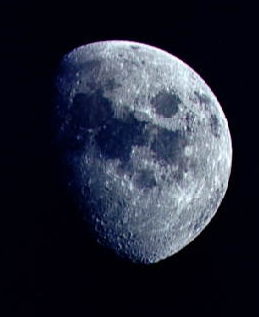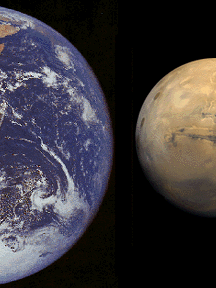Click on image for full size
Windows to the Universe original artwork by Randy Russell.
Related links:
Nicknames for the Full Moon
Do you know anybody who has a nickname? Did you know that the Full Moon has a bunch of nicknames?
Native Americans who lived in the North and East parts of North America had many nicknames for the Full Moon. They gave the Full Moon a different nickname for each month of the year. The nicknames helped them keep track of the seasons. The Native Americans who made up the nicknames are called the Algonquian tribes. The Algonquian tribes liked to hunt and fish, and to grow crops for food. Most of the names they had for the Moon were about hunting, fishing, plants, or the seasons.
Some European settlers learned the names for the Full Moon from the Algonquian people. Some of the settlers used the "moon names" too. Most people today have heard of the "Harvest Moon". Farmers harvest their crops in the fall. The farmers can work late, after sunset, because of light from the Harvest Moon.
Here are the names the Algonquian people used for the Full Moon at different times of the year.
| Month | Moon name | Why that name? |
| January | Wolf Moon | Hungry wolf packs howled at night |
| February | Snow Moon | Heaviest snowfalls in the middle of winter |
| March | Worm Moon | Start of spring, as earthworms (and the robins that eat them!) began to appear |
| April | Pink Moon | An early spring flower called "moss pink" started to bloom |
| May | Flower Moon | Many types of flowers bloom in May |
| June | Strawberry Moon | Strawberries were ready to be picked and eaten |
| July | Buck Moon | New antlers of buck deer, coated with velvety fur, began to form |
| August | Sturgeon Moon | Sturgeon, a large fish found in the Great Lakes, were easily caught at this time of year |
| September | Harvest Moon | Farmers could continue harvesting until after sunset by the light of the Harvest Moon |
| October | Hunter's Moon | Hunters tracked and killed prey by moonlight, gathering food for the coming winter |
| November | Beaver Moon | Time to set beaver traps before the swamps froze, to make sure of a supply of warm winter furs |
| December | Cold Moon | The cold of winter sets in |












